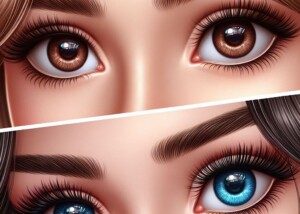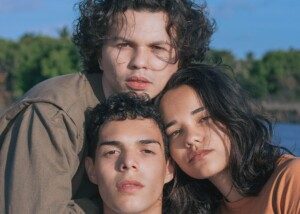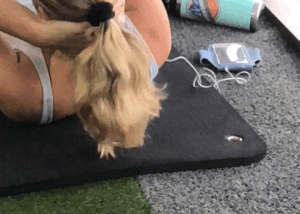
I’m autistic, deeply fascinated by racial ambiguity, colorism, the way people look whose parents are different races.
This is an innocent “special interest” that never ceases to intrigue my neurodivergent mind!
One of the traits of being on the Autism Spectrum is that of having unusual interests, especially intensely. One of mine is the facial features, hair and skin tone of racial mixes.
Even during my grade school years I was fascinated by the varying degrees of dark skin of the many kids I’d see at the big public swimming pool I frequently visited during summer breaks.
And I will immediately notice if a child looks only one-fourth black and three-fourths white.
I’ll look around to see if their parents are nearby, to put the physical features into context.
I’m very intrigued at how the features of a “quarter-racial” child or adult (like the one at the top of this page seems to be) can manifest, as well as manifestations of other combinations such as the following:
- Half East Indian, one-fourth white, one-fourth black
- Half Lebanese, half Japanese
- One-fourth Polynesian (e.g., Tahitian, Samoan), one-half white, one-fourth Asian
- One-half Asian, one-fourth white, one-fourth black
- Half black, one-fourth Asian, one-fourth white
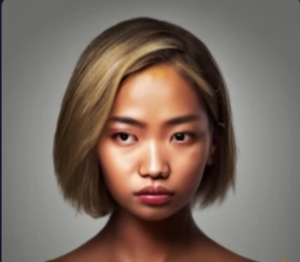
One-fourth white, one-fourth black, one-half Asian.
One day at the gym I saw an adolescent girl with her father. Dad looked one-quarter Asian and three-fourths white.
The girl looked similar except also with a tiny bit of black ancestry due to her long golden hair’s waviness and lightly tanned skin. I would’ve loved to have seen her mother.
The way a mix of genes can present in children fascinates me far more than in adults, because with adults — particularly women — there’s always the possibility that their hair has been altered in some way — if what’s on their head even IS their own hair, what with the popularity of wigs, weaves, extensions, fake ponytails, chemical straightening, flat ironing and dyes.

A mix of Middle Eastern, African, Caucasian, Latino. Or, he could be 50/50 Middle Eastern and black.
One day I saw a gorgeous preschool girl in a shopping cart. She had very light caramel skin, almond-shaped green eyes, and gold wavy hair that had a few kinky areas. I was intrigued, hoping to get a look at her parents.
Only her mother was present, who appeared biracial or quarter-racial. I first complimented her on the child’s features.
I then asked if the child had any Asian in her. The mom didn’t seem offended at all, and replied that the girl’s father was half-Japanese.
When I was a personal trainer one of my white clients mentioned that his grandchildren were one-quarter Japanese.
I had to see their photo and asked if he had one. He proudly showed me his grandkids, and I stared intently at their features: dark blond, straight hair and a very slight hint of Asian in their eyes.
I’ve spent a lot of time on Google Images and Instagram doing searches such as “Blasian,” “Black Indians,” “Blonde biracial kids,” “Part East Indian, part Asian,” “One-fourth black,” etc.
I’ve enjoyed pouring through hashtags such as #mixedracebabiesig. There’s a TON of hashtags like this. It’s a goldmine for me.

Part black, part East Indian, part white? An exotic combination of caramel skin and brownish/dark gold, very wavy hair. Freepik.com/pch.vector
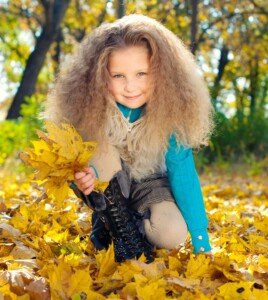
Quarter-racial? This image REALLY grabbed my attention because her hair is similar to mine. I’m Czech/Lebanese. Shutterstock/MelashaCat
What bugs me about some of these hashtag pages is that the racial breakdown, which is given by the person who submitted the image, never indicates percentage.
So if it says “Thai/Ghanian,” that doesn’t necessarily mean 50/50, especially if the child looks predominately Southeast Asian. Is it 75/25?
The typical ethnic identification is merely a list of countries or ethnicities. Sometimes there are three such as “Black, Irish and Syrian,” but this doesn’t tell me the percentage makeup.
For example, is one parent half-black, half-white, and the other full Syrian?
Or is one parent full black, and the other half white (Irish) and half Syrian?
Or could both parents be part black, and the other half of one is Irish and the other half of the other is Syrian? There are many possible permutations here.
One of the submissions said: “Jamaican, Bajan, Zambian, Zimbabwean, German & British.” This essentially reads as “black and white,” and the four black-race countries vs. two white race doesn’t mean the child is mostly black.
Dad could be all white (German), while the mother is half-white (British) — while Mom’s other half is all four of the dark races.
This would make the child three-quarters white, one-fourth black. The photo showed a hazel eyed girl with light caramel skin and sandy brown, curly hair.
Maybe some parents don’t really know their percentages, but when there’s only three ethnicities or races involved, this makes it easier to break them down.
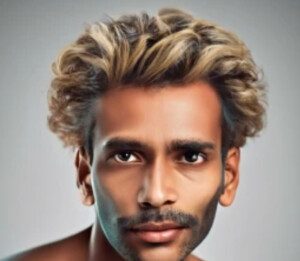
One-fourth black, one-fourth white, one-half Latino.
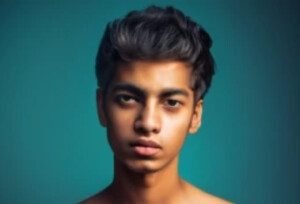
Half East Indian, half Japanese. Or, three-fourths Samoan (Polynesian) and one-fourth East Indian. There’s a LOT of possibilities here, which can also include Middle Eastern and Latino. How about one-fourth black, one-fourth Asian and one-half either Samoan or Lebanese?

One-half Asian, one-fourth black, one-fourth white. Or, one-half Samoan or Tahitian, one-fourth Mexican, one-fourth white.

Half black, half Asian, e.g., half Sudanese, half Korean or Malaysian.
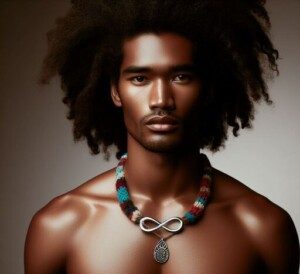
Half black, half Samoan!
Mixing up the Genes
I’ve often imagined what the offspring of various hypothetical pairings would look like, such as from one parent who’s half East Indian, half Japanese, and the other parent who’s half white, half black. The child would be 25% of each, but the possible expressions (phenotype) are all over the place.
If they have three kids, they might end up as follows:
- Black thick wavy hair, very light skin, subtly almond-shaped, blue eyes
- Light brown, pin-straight hair, medium caramel skin, big brown eyes
- Brunette, loosely coiled hair, bronze skin, almond-shaped brown eyes
Perhaps the coolest features in my opinion are a skin tone that can be described as a deep tan or light caramel, thick and fluffy dark blonde hair, green or brown eyes with a touch of almond shape, along with the lips of a future model.
This presentation isn’t too difficult to find on the various hashtag pages devoted to mixed race. And remember, you’ll get the most accurate presentation among children and adolescents, since they’re most likely to be in a natural state (e.g., no flat-ironed hair).
Am I racist or guilty of “colorism”?
I’ve posted brief comments on different platforms relating to my fascination with skin tone, facial features and hair characteristics that reflect a mixing of races and ethnicities.
Sure enough, there’s always some close-minded person who replies something like, “Who CARES what race she is? As long as she is loved,” or, “What DIFFERENCE does it make what his parents are? He’s a beautiful child just the same!”
It’s called colorism when the media deliberately selects racially ambiguous models for stories.
I’ve done this — but it’s not colorism, at least not in a negative sense. “Colorism” has negative connotations.
Yet some would accuse me of colorism. Talk about being judgemental!
Looks like some people just don’t grasp an autistic individual’s high propensity towards hyperfixation on topics that nobody should care about.
The innate brain wiring of Autistics gives rise to developing preoccupations with esoteric subject matter.
I’ve always been intrigued by human genetics. In high school I enjoyed doing those Punnett squares while other kids struggled with them.
It’s always perplexed me how so many adults can’t comprehend how two brown eyed people could have a child with blue eyes, or how two dark haired people could have a child with flaxen hair.
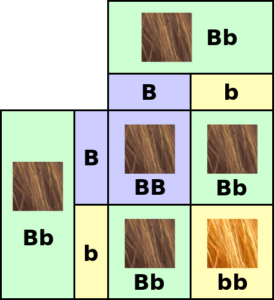
Punnett square. Iamnotabunny/CC BY-SA 4.0/creativecommons.org/licenses/by-sa/4.0/Wikimedia Commons
My fascination with all of this is actually the total opposite of racism and “colorism.”
You won’t find ME telling a stranger off the street, “I can’t believe your sons have the same set of parents; one is so much darker than the other.”
I’d never tell parents, “Hey, you should cut Scott’s curls,” or, “You should put gel on Kari’s hair to control it.”
I would never tell any child of a mixed race, “Don’t spend too much time in the sun or you’ll get too dark.”
My special interest in racial ambiguity is lifelong and will never subside. Having hyperfixations is one of the joys of being on the Autism Spectrum!
 Lorra Garrick has been covering medical and fitness topics for many years, having written thousands of articles for print magazines and websites, including as a ghostwriter. She’s also a former ACE-certified personal trainer. In 2022 she received a diagnosis of Level 1 Autism Spectrum Disorder.
Lorra Garrick has been covering medical and fitness topics for many years, having written thousands of articles for print magazines and websites, including as a ghostwriter. She’s also a former ACE-certified personal trainer. In 2022 she received a diagnosis of Level 1 Autism Spectrum Disorder.
.

